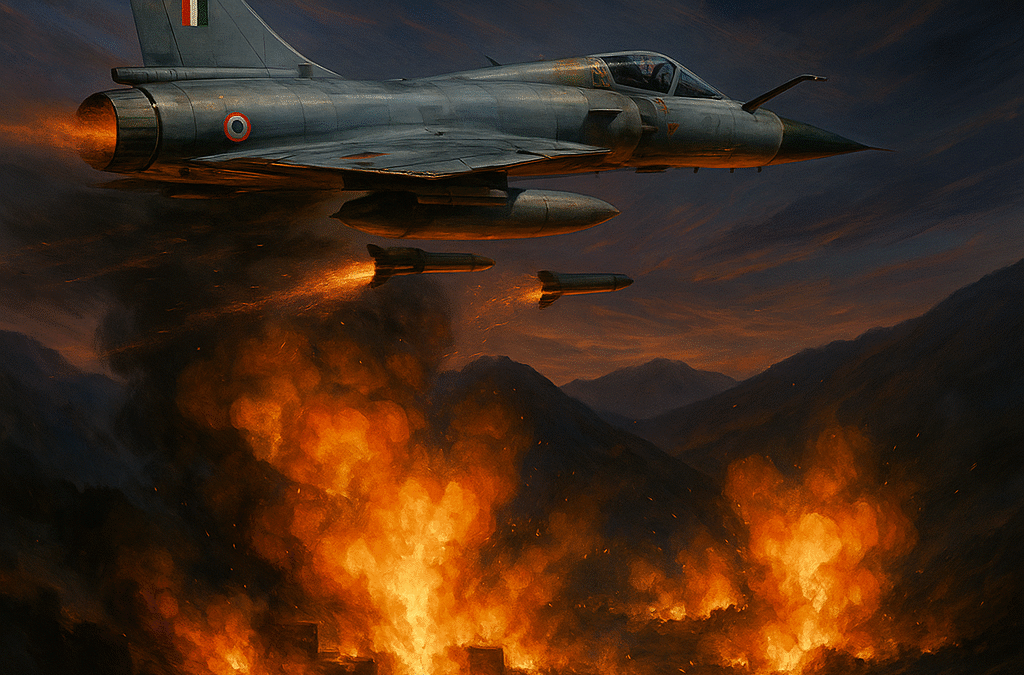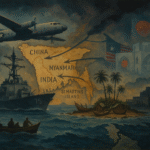For decades, India has endured a slow bleed. Terror attacks—plotted, launched, and supported by Pakistan’s deep state—have targeted civilians, soldiers, and sovereignty. The 2019 Indian Air Force airstrikes on Balakot were not just retaliation for the Pulwama terror attack that killed 40 CRPF personnel. They were a long-overdue assertion: India will no longer absorb blows in silence.
The Balakot Airstrikes: A Line Crossed
In the early hours of February 26, 2019, Indian Mirage-2000 fighter jets crossed the Line of Control and struck a Jaish-e-Mohammed (JeM) training camp in Balakot, deep within Pakistan. The message was loud and clear: there would be no sanctuary for terrorists, regardless of geography.
This was a shift in doctrine. For years, India’s response to Pakistan-sponsored terror was reactive and restrained. But Pulwama marked a tipping point. The suicide bombing was carried out by JeM, a group with a long and bloody history of attacks on Indian soil, operating openly in Pakistan under the military’s watch. India could not afford silence anymore.
Historical Context: A Pattern of Provocations
Pakistan’s strategy of using non-state actors as instruments of asymmetric warfare dates back to the late 1980s. Since then, major terror attacks on India—ranging from the 1993 Mumbai blasts to the 2001 Parliament attack, the 2008 Mumbai attacks, Pathankot in 2016, Uri in 2016, and Pulwama in 2019—have had one common thread: complicity or direct support from elements within Pakistan’s security establishment.
The 2008 Mumbai attacks were a grim example. David Headley, one of the key conspirators, confessed to receiving training and logistical support from Pakistan’s Inter-Services Intelligence (ISI). The U.S. National Security Archive has declassified numerous documents confirming ISI’s link to Lashkar-e-Taiba, the group that carried out the attacks.
Former U.S. Secretary of Defence Chuck Hagel once noted, “Pakistan has, in many cases, not been a full and willing partner in dealing with terrorism. They have, at times, helped fund and support it.” His words echoed what India had said for years, but what the world hesitated to acknowledge.
Rebutting Pakistan’s Narrative
Predictably, after the Balakot airstrikes, Pakistan dismissed the Indian action as “fictitious” and “a failed operation.” They claimed no damage was done. But satellite imagery, ground reports from independent journalists, and intercepted communication tell a different story. According to multiple credible sources, the target was a major Jem facility, and casualties were significant.
Pakistan’s strategy has always hinged on plausible deniability. They shelter terror groups in remote areas, rename them when global pressure mounts, and suppress any internal dissent or leaks. But the world is seeing through the charade.
Christine Fair, a South Asia expert and professor at Georgetown University, writes in her book Fighting to the End that “Pakistan’s army does not see these terrorist groups as liabilities; rather, they are assets that help advance strategic depth against India.” This explains the repeat offences and the state’s lack of genuine action.

The Case for the Indian Strike
India’s strike wasn’t about vengeance. It was about restoring deterrence. After Uri, India conducted surgical strikes on terror launch pads. Balakot took that a step further—hitting the infrastructure inside Pakistan proper. The message wasn’t just to terrorists. It was to their patrons in Rawalpindi: there will be a cost for continued proxy warfare.
Former Indian Army chief Gen. Bipin Rawat had famously said, “You have to fight the war with the weapons you have and in the manner that suits your strategy.” India’s strategy now includes pre-emptive, precise, and politically resolute military action.
International Reaction: Tides Turning
While some global powers called for restraint, few questioned the legitimacy of India’s position. The Financial Action Task Force (FATF) put Pakistan on its “grey list” for failing to curb terror financing. The United Nations Security Council issued a statement condemning the Pulwama attack and naming JeM. Even nations traditionally neutral on South Asian conflicts acknowledged India’s right to self-defence .
.
A Necessary Stand
India had no choice. The cost of inaction was higher than the risk of escalation. When a state uses terrorism as statecraft, diplomacy alone cannot contain the threat. As Prime Minister Narendra Modi said after the Balakot strike, “The world is seeing a new India. One that will no longer tolerate those who bleed us by a thousand cuts.”
This strike wasn’t just about Balakot. It was a policy shift—a declaration that India’s patience has limits, and her response will now be dictated by strength, not restraint.
Conclusion
For too long, Pakistan’s deep state played a double game—fighting terror in the West’s eyes while feeding it in the East. The Indian airstrikes were a wake-up call, not just to Pakistan, but to the world. Terrorism cannot be compartmentalised. It has no religion, no geography—but it thrives on political cowardice and diplomatic ambiguity.
India chose to end the ambiguity. And history will record that as a necessary turning point.






